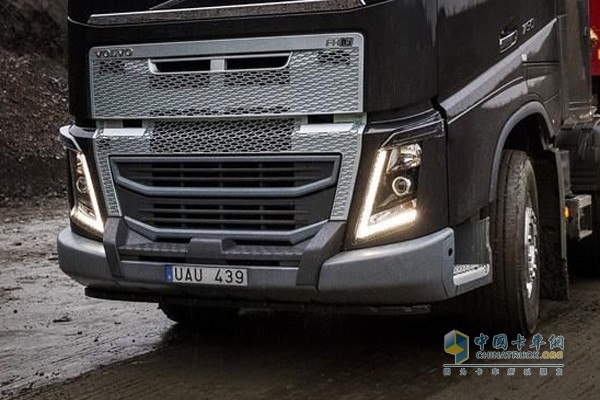Smooth growth in glass fiber production
 Part of the body material of a truck is usually made of fiberglass
Part of the body material of a truck is usually made of fiberglass In 2016, the industry's output of glass fiber yarn was 3.62 million tons, an increase of 12.07% year-on-year, reaching around 60% of the world's total production capacity. In the past three years, the CAGR of China's glass fiber production capacity reached 6.65%, which is much higher than the annual average annual production capacity. The compound growth rate was 1.70%. The enterprises above designated size achieved a revenue of approximately RMB 172.5 billion, an increase of 6.2% year-on-year; total profit was RMB 11.86 billion, a year-on-year increase of 9.8%.
In the first half of 2016, the supply and demand relationship of the glass fiber reinforced yarn market continued to be moderately tight, and the product price continued the growth momentum of last year, driving the overall profitability of the industry to continue to rise. In the second half of the year, due to the slowdown in the development of the wind power market, the reinforcing yarn market declined, but the electronic yarn market emerged suddenly and the price of products rose sharply, ensuring that the overall profit of the industry achieved rapid growth.
The capacity growth of the glass fiber industry is mainly concentrated in the three major pool companies, which are driven by the demand from wind power, thermoplastics and copper clad laminate industries. The utilization rate of the industry's production capacity has increased and the output has grown steadily.
China's Jushi, Taishan Fiberglass and Chongqing International are the three giants in China's glass fiber industry, which together account for about 64% of China's glass fiber production capacity, together with Shandong Glass Fiber, Sichuan Weibo and Changhai, and the top six suppliers in China The proportion is about 80%. Whether it is the global market or the domestic market, there are characteristics of concentrated production. The top six suppliers can basically control the supply of products in the industry. Under this pattern, large-scale glass fiber enterprises have greater competitive advantages, and it is very difficult for emerging companies to enter and leave the market.
The demand for glass fiber in China is still at a stage of growth, and the demand for new energy and environmental protection fields such as transportation and wind power is significantly lower than the global average. As China's economy enters a new normal, the mode of economic growth shifts from extensive to intensive and refined, which means that the permeability of glass fiber materials will mainly rely on the accelerated penetration of glass fiber composite materials in emerging areas.
In the future, glass fiber reinforced plastics (GFRP) will have lower density, higher strength, and wear resistance, heat resistance, corrosion resistance, and higher cost performance in alternative materials for automotive lightweighting. They are suitable for use in the manufacture of automobile bumpers and flooring. , Intake tube guards and other auto parts.
However, at present, the proportion of composite materials used in China's auto parts is only 8%-12%, far lower than the proportion of foreign 20-30%. With the development trend of lighter vehicles, it is expected that glass fiber-reinforced plastics will be used in more auto parts, and there is still room for growth in market demand.
Ball Bearings are used in many kinds of machines and devices with rotating parts. The characteristics are as following:
1.low starting and good operationg friction.
2.the ability to support conbined radial and thrust loads.
3.less sensitivity to interruptions in lubrication.
4.no self-excited instabilities
5.good low-temperature starting.
Ball Bearing
Ball Bearing,Deep Groove Ball Bearing,Angular Contact Ball Bearing,Thrust Ball Bearing
Xibei Bearing Co.,Ltd. , https://www.nxzjck.com